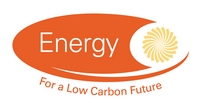Network Capacity - Technology Options, Benefits & Barriers Workshop and Multi-Criteria Assessment: WP1 Tasks 6 & 7
Abstract:
The UK’s electricity transmission and distribution systems have little spare capacity to accommodate the widespread changes in volume and location of power flows arising from planned changes in generation type and characteristics, and from major changes in demand patterns. Gaining consents for the construction of new overhead lines is extremely time-consuming and costly. Without action, this will increasingly constrain the necessary changes in generation and demand.
The ‘Network Capacity’ project has assessed the feasibility of using new technologies now emerging in the marketplace or in development, including multi-terminal HVDC systems, in novel ways in order to provide increased Transmission & Distribution system capacity and improved management of network power flows, in order to facilitate increased renewable energy installation levels in the UK.
This document addresses the full range of technologies considered during the project, including both FACTS and HVDC technologies. It contains two reports:
- Appendix A. Smarter Grid Solutions Report: Technology Options, Benefits and Barriers Workshop Review (Task 6; starts page 11)
The main objectives of the workshop were to:- Ensure all participants are informed about project activities and expected outcomes
- Consider the relative merits of the technologies under review
- Identify all issues that translate into benefits or barriers for the technologies under review
- Identify and prioritise assessment criteria
- Assess the range of opinions on uncertain, controversial and subjective issues
- •Identify and assess technology development opportunities
- Appendix B. Smarter Grid Solutions Report: Multi-Criteria Assessment of Technologies (Task 7; starts page 42)
This workshop looked at the interaction between various factors in selecting the most appropriate area of further investigation. The assessment results indicated that the assessment criteria would be fulfilled most effectively by pursuing the following development options:- Investigate use of energy storage to help solve ANM constraints
- Commission work on new HVDC systems/topologies
- Prompt changes in regulatory framework to change business drivers
- Develop effective DC breaker or blocking capability
- Prompt changes in regulatory framework to change business drivers
- Support R&D in new devices for greater capability/performance
- Commission work on new HVDC systems/topologies
- Develop effective DC breaker or blocking capability
- Investigate use of energy storage to help solve ANM constraints
It is perceived that the technology could be effective in meeting the assessment criteria, including enhancing network capacity and allowing more renewables to connect, but some changes to the regulatory environment may be necessary for this solution to be used widely.
Publication Year:
2010
Publisher:
ETI
Author(s):
Mott MacDonald
Energy Category
Class Name:
Subclass Name:
Category Name:
Language:
English
File Type:
application/pdf
File Size:
2650441 B
Rights:
Energy Technologies Institute Open Licence for Materials
Rights Overview:
The Energy Technologies Institute is making this document available to use under the Energy Technologies Institute Open Licence for Materials. Please refer to the Energy Technologies Institute website for the terms and conditions of this licence. The Information is licensed "as is" and the Energy Technologies Institute excludes all representations, warranties, obligations and liabilities in relation to the Information to the maximum extent permitted by law. The Energy Technologies Institute is not liable for any errors or omissions in the Information and shall not be liable for any loss, injury or damage of any kind caused by its use. This exclusion of liability includes, but is not limited to, any direct, indirect, special, incidental, consequential, punitive, or exemplary damages in each case such as loss of revenue, data, anticipated profits, and lost business. The Energy Technologies Institute does not guarantee the continued supply of the Information. Notwithstanding any statement to the contrary contained on the face of this document, the Energy Technologies Institute confirms that it has the right to publish this document.
Further information:
N/A
Region:
United Kingdom
Publication Type:
Subject:
Theme(s):
Energy Storage and Distribution
Related Dataset(s):
No related datasets
Related Project(s):
Related Publications(s):
An ETI Perspective - Low carbon challenges for UK energy networks
ETI Insights Report - UK Networks Transition Challenges - Electricity
ETI Insights Report - UK Networks Transition Challenges - Gas
ETI Insights Report - UK Networks Transition Challenges - Heat
ETI Insights Report - UK Networks Transition Challenges - Hydrogen
Enabling efficient networks for low carbon futures: Options for governance and regulation
Infographic - UK Networks Transition Challenges
Network Capacity - Barriers to Application of Multi-Terminal HVDC in the UK: WP2 Task 4
Network Capacity - Executive Summary
Network Capacity - Final Project Summary (Work Packages 1 & 2 a.k.a. WP1 Task 8)
Network Capacity - One Page Summary
Network Capacity - Performance of Onshore Multi-Terminal HVDC: WP2 Tasks 2 & 3
Network Capacity - Request for Proposal
Network Capacity -WP1 Task 2: Impact of Active Power Flow Management Solutions
Options Choices Actions - UK scenarios for a low carbon energy system



